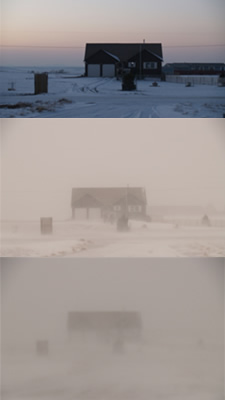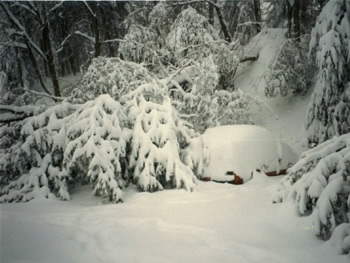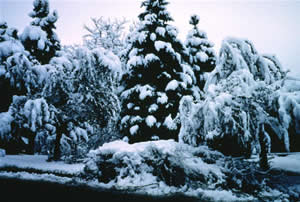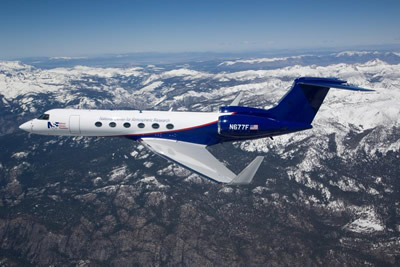
National Weather Service Forecast Office of Cheyenne, WY/ Ben Jacquot
Blizzards
Can you imagine cold winds blowing fast enough to knock you over and snow deeper than you are tall? Imagine that itís dark because the electricity is out, and the roofs of buildings collapse because of the large amount of snow. These were all part of the Blizzard of 1993 that hit the entire East Coast of the United States.
A blizzard is a storm with large amounts of snow or blowing snow and strong winds that are blowing more than 35 mph (56 kph). During a blizzard, itís difficult to see the landscape because the blowing snow makes everything look white. During some blizzards, no new snow falls. Instead snow that is on the ground blows around. This is called a ground blizzard. The strong winds of a blizzard form because of a difference in pressures between two systems. These pressure systems are the low pressure system which is causing the stormy weather and the high pressure system on the back side of the low pressure system.
The National Weather Service says that blizzards are most common in the United States mostly the upper Midwest and the Great Plains. Blizzards are common in countries like Canada and Russia too. Russia uses a different name for blizzards, "purgas". Blizzards can occur all over the world. Iran had a blizzard in January of 2008. This blizzard brought very cold temperatures and lots of snow. Places near the equator can experience blizzards especially at high altitudes.
Blizzards can be very dangerous. The blowing snow makes it hard for people driving automobiles to see the road in front of them. Roads can be blocked by big piles of snow that were carried by the wind. Many times cold temperatures are also part of blizzard conditions so people need to wear warmer clothing.














